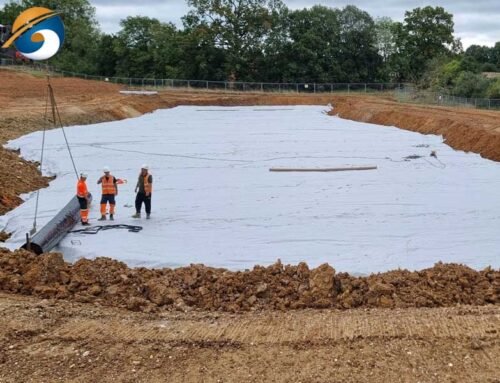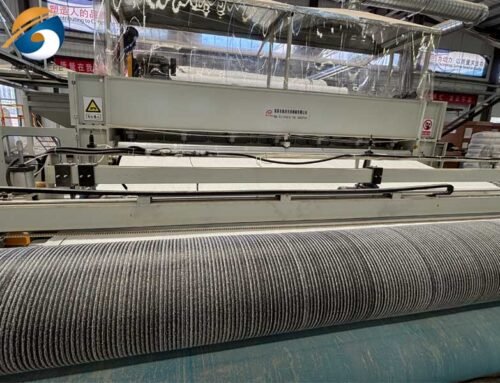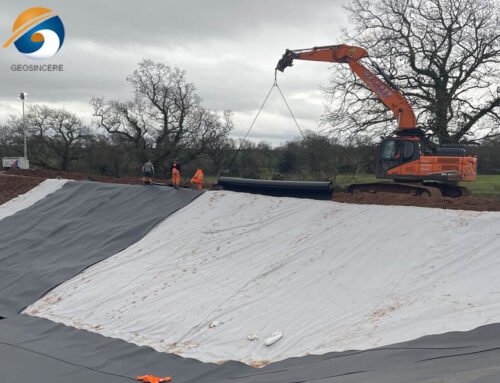In the realm of modern construction, Geosincere geogrids have emerged as indispensable elements, revolutionizing the way we build infrastructure. These versatile materials offer a myriad of benefits, ranging from enhancing soil stability to improving the lifespan of structures. In this comprehensive guide, we delve into the various types, functionality, advantages, and benefits of geogrids in construction.
Geosincere Uniaxial geogrids play a crucial role in modern civil engineering, particularly in soil reinforcement and construction. These innovative materials are designed to provide structural support and stability in a variety of construction scenarios, from road construction to slope stabilization. In this article, we will explore what uniaxial geogrids are, their purpose, and how they differ from their biaxial counterparts. Understanding the distinction between these two types of geogrids is essential for selecting the right material for specific engineering applications.
1. What Is Uniaxial Geogrid?
Geosincere uniaxial geogrid is a type of geosynthetic material primarily designed to provide tensile reinforcement in one direction (uniaxial). It is commonly used in civil engineering and construction applications to improve soil stability, prevent erosion, and reinforce structures like retaining walls, slopes, and roadways.
Uniaxial geogrids are a type of geosynthetic material made from high-density polyethylene (HDPE) or other polymers, designed with a one-directional (uniaxial) tensile strength. They are widely used in civil engineering and construction for soil reinforcement, slope stabilization, and retaining wall applications.


2. What Are Advantages Of Uniaxial Geogrid?
2.1 Uniaxial Geogrid – High Tensile Strength in One Direction
Uniaxial geogrids provide superior tensile strength in a single direction (longitudinal), making them ideal for applications requiring load distribution in one primary direction, such as retaining walls and steep slopes.
2.2 Uniaxial Geogrid – Improved Soil Reinforcement
Uniaxial geogrids improve the load-bearing capacity of weak soils by mechanically interlocking with surrounding aggregate materials. This interaction creates a reinforced composite structure that evenly distributes applied loads, minimizing stress concentrations and preventing differential settlement. Their tensile strength helps stabilize the soil matrix, ensuring long-term performance in infrastructure projects while maintaining environmental sustainability.
2.3 Uniaxial Geogrid – Cost-Effective Solution
Geosincere uniaxial geogrids enhance soil stability, minimizing the requirement for costly excavation and backfill materials, which helps reduce total project expenses.
2.4 Uniaxial Geogrid – Durability & Longevity
Constructed from UV-stabilized HDPE or polyester, these geogrids offer excellent resistance to chemical degradation, biological damage, and environmental stressors, guaranteeing durable performance in demanding conditions.
2.5 Uniaxial Geogrid – Easy Installation
Geosincere uniaxial geogrids are lightweight yet durable, making them simple to transport and maneuver on-site. Their flexible design allows for easy cutting and customization to fit various project requirements. This streamlined installation process helps accelerate construction progress while maintaining structural integrity.
2.6 Uniaxial Geogrid – Prevents Erosion & Slope Failure
Geosincere uniaxial geogrids provide critical reinforcement for steep slopes and embankments by enhancing soil cohesion. Their high-tensile strength helps distribute loads evenly, effectively preventing erosion and slope failures. This reinforcement solution ensures long-term stability while minimizing the risk of landslides.
2.7 Uniaxial Geogrid – Reduces Maintenance Needs
Geosincere uniaxial geogrids strengthen weak subgrades while enhancing the overall structural stability of paved surfaces. Their reinforcing capability extends the service life of roads and other infrastructure by reducing stress-related damage. This results in significantly lower maintenance requirements and long-term cost savings for projects.
2.8 Uniaxial Geogrid – Environmentally Friendly
Uniaxial geogrid is an environmentally friendly solution for soil reinforcement and slope stabilization. Made from high-density polyethylene (HDPE) or other recyclable materials, it reduces the need for excessive excavation and natural resource consumption. Its open-grid structure promotes vegetation growth, enhancing erosion control and ecological balance. With long-term durability and minimal environmental impact, uniaxial geogrid supports sustainable construction practices while maintaining structural integrity.
2.9 Improved Soil Stability
Geogrids significantly enhance soil stability by minimizing lateral movement and increasing bearing capacity. This results in reduced settlement and improved overall performance of the constructed structure.
2.10 Extended Service Life
By mitigating the effects of environmental factors such as erosion and differential settlement, geogrids contribute to the longevity of infrastructure projects. They provide reliable reinforcement, ensuring sustained functionality over the project’s lifecycle.
3. Functionality of Uniaxial Geogrids
Geogrids function by confining and reinforcing soil, effectively redistributing applied loads and mitigating stress concentrations. By interlocking with soil particles, geogrids create a mechanically stabilized layer, preventing soil erosion and promoting long-term structural integrity. Additionally, they enhance the bearing capacity of weak soils, enabling the construction of sustainable infrastructure on otherwise challenging terrain.
4. Applications of Uniaxial Geogrids:
4.1 Soil Reinforcement for Retaining Walls:
Uniaxial geogrids are commonly used behind retaining walls or reinforced earth walls. They help distribute vertical and lateral loads and resist the movement of soil, preventing the wall from failing under pressure.
4.2 Slope Stability:
Uniaxial geogrids offer an effective solution for stabilizing slopes in landslide- or erosion-prone areas. Their high-strength reinforcement enhances soil cohesion while preventing gradual material displacement. This engineered solution provides durable slope protection while maintaining natural terrain integrity.
4.3 Road Base and Pavement Construction:
Uniaxial geogrids enhance road construction by reinforcing base layers, significantly improving load distribution across the pavement structure. Their high-tensile strength helps minimize rutting and deformation caused by heavy traffic, extending the road’s service life. This reinforcement solution optimizes structural performance while reducing long-term maintenance needs.
4.4 Landfills and Waste Containment:
They can be used in landfill projects to stabilize the foundation and prevent shifting, reducing the risk of landfill slope failures.
4.5 Bridge Approaches and Embankments:
In embankment construction, uniaxial geogrids provide reinforcement to support structures like bridges, helping maintain the integrity of the embankment and distribute the load evenly.


5. Benefits of Geogrids in Construction:
5.1 Enhanced Durability:
Geogrids reinforce soil, preventing structural failure and extending the lifespan of constructed facilities. This durability is especially crucial in challenging environments prone to erosion and ground movement.
5.2 Versatility:
From roadways and railways to retaining walls and landfill liners, geogrids find application across a diverse range of construction projects. Their versatility makes them indispensable components in modern engineering practices.
5.3 Environmental Sustainability:
By stabilizing soil and reducing the need for extensive earthworks,geogrids contribute to environmentally sustainable construction practices. They minimize the ecological footprint of infrastructure projects while ensuring long-term environmental stewardship.
6. Conclusion
Uniaxial geogrids are an efficient and economical solution for soil reinforcement, offering high tensile strength, durability, and ease of installation. They are particularly beneficial in applications requiring one-directional load support, such as retaining walls and slope stabilization.
Choosing a Good uniaxial geogrids Supplier :
Shandong Geosino New Material Co.,Ltd (Brand:Geosincere) is the professional Lake liners and geosynthetics manufacturer and wholesaler located in Shandong Province, China. We are an professional manufacturer, exporter and wholesaler for such geosynthetic products as HDPE Pool Liner, geotextiles, geogrids, geocells, geosynthetic clay liners (geosynthetic clay linerss), drainage boards, etc.We have been exporting Lake liners and geosynthetics to over 100 countries. They choose Geosincere as partner for more than 10 years.
GEOSINCERE has been keeping on investing in technological innovation, manufacturing facilities improvement and turnkey engineering abilities. We have invested 10 million dollars into our manufacturing factory which is equipped with state-of-the-art automatic production lines to manufacture high quality Lake liners and other geosynthetics with optimized processes. Our extensive lines of geosynthetics products are well known for their ensured quality, high performance, excellent durability and best cost effectiveness.
GEOSINCERE brand Lake liners and other geosynthetics products and solutions can meet your requirements by our solid technologies, innovative engineering solutions and excellent customer services. GEOSINCERE always tries our best to solve the most complex civil, mining and environmental challenges with our innovative and high performance geosynthetic products. Quality assurance, factory price and fast delivery time are our competitive advantages.





